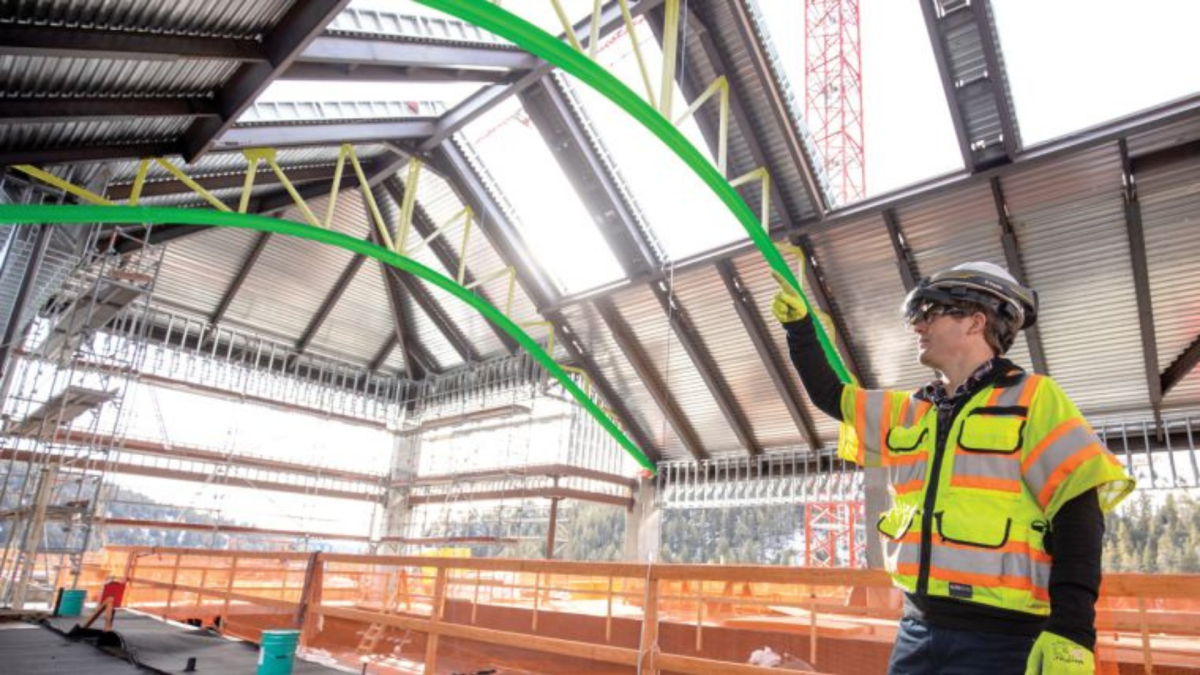
Supplied by PR
In recent years, the construction industry has seen a significant increase in the adoption of mixed reality technology. Mixed reality, a combination of virtual and augmented reality, offers a new way of visualising and interacting with construction and mining projects, allowing for more accurate and efficient planning, design, and construction processes. This is the first part of a two part article.
With the development of lightweight, wearable devices such as the Trimble XR10 with HoloLens 2 headset, mixed reality is becoming more accessible and integrated into the workflows of construction and mining professionals.
One such professional is Pierre Henderson, technical director, Xodus Enterprises, who has taken this to heart and has been using mixed reality in his business in the planning and progress tracking of projects using 3D design models, known as 4D simulation.
By adopting Trimble Connect for HoloLens and the Trimble XR10, this mixed reality technology has enabled Xodus Enterprises to take project planning and progress tracking to a whole new level.
How the XR10 works
The company focuses mainly on complex plant environments on mines and brownfield projects, such as furnace rebuilds, during their highly time-constrained maintenance shutdowns. The Trimble XR10 mixed reality technology has allowed the company to overcome many of the discrepancies that arise in the construction industry.
Says Pierre, “Rebuilding the furnace every year is a major undertaking and we have picked up many discrepancies which I believe happens across all construction sites. After a 3D Laser scan, engineers design the furnace and it travels through a few channels where it is signed off by several individuals, who make adjustments along the way. It then it goes to production and installation on-site. The number of hands involved in early design often introduces several variations which include important discrepancies.”
The MR technology has allowed Xodus Enterprises to identify interferences and clashes that are not immediately apparent in the design phase. By loading the 3D design models onto the headset, and taking the model holographically to site, the company can check for potential issues that may arise during the construction phase.
“The first area that we use the XR10 for is literally after the design has been done. We take the model holographically on site, in place, and check for problems, interferences, and clashes that are sometimes not picked up in the model,” Pierre says.
Walking through the furnace (or any other site) with the headset on, the visuals on the headset show three-dimensional images overlaid on the actual surroundings as the viewer walks through the site. Looking in all directions, discrepancies are immediately evident as to where pipes are overlapping doorways for example or end abruptly, as well as where the model syncs exactly.
The use of the XR10 is integral to Xodus Enterprises’ operations, particularly when it comes to evaluating the correctness and speed of erection. By analysing and identifying problems on-site, the MR technology has enabled the company to assess the magnitude of issues and determine whether they can be resolved on-site or if they need to be escalated to manufacturing. This approach has led to significant cost savings and minimised delays that could have impacted the project timeline.
This approach has helped to ensure that what is being constructed fits seamlessly on-site, with perfect synergy with what is happening in real time. This has resulted in fewer discrepancies and errors, which has boosted the efficiency of operations and improved the overall quality of work.
Pierre adds, “Everything is recorded on the headset for later analysis where inconsistencies are picked up. From a QC analysis point of view checking the playback/recording afterward, you can inspect to see if installation is correct and pick up problems for example, pipes that are incorrectly connected. This prevents major rework after installation, which impacts significantly on production costs.”
More news
- PART 2: CONCRETE IN THE DESIGN OF A UNIQUE LUXURY HOME IN GEORGE, SOUTH AFRICA
- PART 1: CONCRETE IN THE DESIGN OF A UNIQUE LUXURY HOME IN GEORGE, SOUTH AFRICA
- MVULE GARDENS, AFRICA’S LARGEST 3D-PRINTED AFFORDABLE HOUSING PROJECT
- PART 3: HARNESSING THE POTENTIAL OF HIGH SULPHUR FLY ASH IN CONCRETE PRODUCTION
- PART 2: HARNESSING THE POTENTIAL OF HIGH SULPHUR FLY ASH IN CONCRETE PRODUCTION

